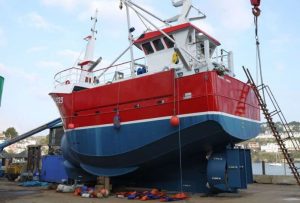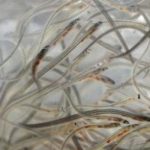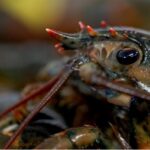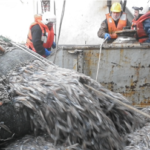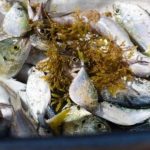Daily Archives: July 17, 2016
Processing upgrades possible, but humans irreplaceable says analyst
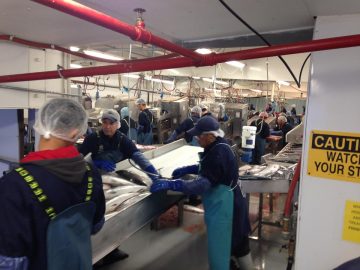 Processing the 20 to 40 million sockeye harvested in about a month each summer is no small feat. And while the Bristol Bay salmon fishery has come a long way from the hey-days of canneries, there are more improvements to come. Bergur Goumundsson has already seen his share of changes in fisheries. He grew up in a town of about 400 people north of the Arctic Circle. His father was a longline fisherman; his brother followed suit. Eventually, Goumundsson found his way into processing technology, and now works for the fisheries division at Morel, an international company that works in food processing. “My job is basically to analyze processes and come up with ideas that could increase the yield. To make more usable products out of the raw materials that you have,” he said. Audio, read the rest here 16:35
Processing the 20 to 40 million sockeye harvested in about a month each summer is no small feat. And while the Bristol Bay salmon fishery has come a long way from the hey-days of canneries, there are more improvements to come. Bergur Goumundsson has already seen his share of changes in fisheries. He grew up in a town of about 400 people north of the Arctic Circle. His father was a longline fisherman; his brother followed suit. Eventually, Goumundsson found his way into processing technology, and now works for the fisheries division at Morel, an international company that works in food processing. “My job is basically to analyze processes and come up with ideas that could increase the yield. To make more usable products out of the raw materials that you have,” he said. Audio, read the rest here 16:35
Freeport fisherman prohibited from fishing for five months
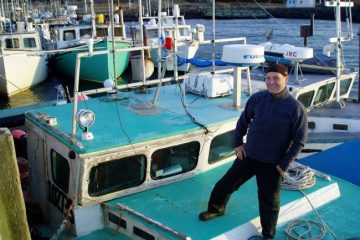 A Freeport fisherman will have to miss five months of ground fishing next year. Beau Gillis pled guilty July 11 to failure to hail accurate weight of fish on board a vessel, possessing halibut less than 81 centimetres in length, offloading fish without a monitor, and possessing fish that cannot be identified. Department of Fisheries officers say they noticed suspicious behaviour during a surveillance patrol on Long Island on June 10, 2015. Fishery Officers pulled over Gillis and seized his truck and 1,134 pounds of halibut worth $11,340. Judge Timothy Landry ordered the forfeiture of Gillis’ truck and the proceeds from the fish plus fines totalling $10,000. Read the rest here 12:21
A Freeport fisherman will have to miss five months of ground fishing next year. Beau Gillis pled guilty July 11 to failure to hail accurate weight of fish on board a vessel, possessing halibut less than 81 centimetres in length, offloading fish without a monitor, and possessing fish that cannot be identified. Department of Fisheries officers say they noticed suspicious behaviour during a surveillance patrol on Long Island on June 10, 2015. Fishery Officers pulled over Gillis and seized his truck and 1,134 pounds of halibut worth $11,340. Judge Timothy Landry ordered the forfeiture of Gillis’ truck and the proceeds from the fish plus fines totalling $10,000. Read the rest here 12:21
Culture: How fishermen use charms, juju and suicide ropes to catch fish for Nairobians
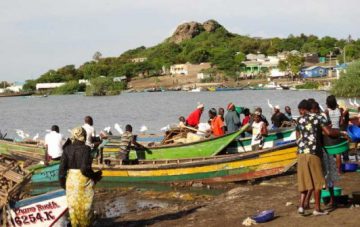 At 8pm, a ghostly stillness settles over the waters of Lake Victoria. A gentle breeze wafts along the beaches, the air fragrant with pine, grass and the sharp, pungent smell of fish as crickets and croaking frogs lull residents to sleep. But for fishermen, bells toll, signaling a new ‘day’ in office. Far away in Nairobi, mama samaki is keeping vigil at Gikomba, Marikiti and City Market, awaiting trucks piled with tilapia to arrive at dawn from the lake’s landing beaches for Nairobi’s urban population. But unknown to urbanites who devour the ngege with relish, fish does not stagger into the net like drunken louts. Most fishermen (and women) use witchcraft to ensure a bountiful catch! From naming boats after dead relatives, scrambling for ‘suicide ropes’ and seeking the services of witchdoctors for protection and good tidings, fishing in the lake region is not for the fainthearted or the ‘Amen!’ brigade. Read the rest here 11:11
At 8pm, a ghostly stillness settles over the waters of Lake Victoria. A gentle breeze wafts along the beaches, the air fragrant with pine, grass and the sharp, pungent smell of fish as crickets and croaking frogs lull residents to sleep. But for fishermen, bells toll, signaling a new ‘day’ in office. Far away in Nairobi, mama samaki is keeping vigil at Gikomba, Marikiti and City Market, awaiting trucks piled with tilapia to arrive at dawn from the lake’s landing beaches for Nairobi’s urban population. But unknown to urbanites who devour the ngege with relish, fish does not stagger into the net like drunken louts. Most fishermen (and women) use witchcraft to ensure a bountiful catch! From naming boats after dead relatives, scrambling for ‘suicide ropes’ and seeking the services of witchdoctors for protection and good tidings, fishing in the lake region is not for the fainthearted or the ‘Amen!’ brigade. Read the rest here 11:11
Makah fishermen add value to catch at home by processing own fish fillets
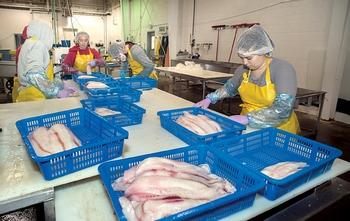 It took 10 years, but today, the Makah Cape Flattery Fisherman’s Co-op in Neah Bay has realized the goal of processing its own fish fillets, adding value to the fish and jobs to the community. Every step of processing done outside of Neah Bay is money that leaves the village. The co-op is happy to be in the business of filleting and packaging their own catch. “The goal of the board of the co-op and the fishermen members was always to get back to processing our own fish,” said Joey Lawrence, Makah Co-op general manager. It took several big investments on the part of the co-op, including the purchase of a machine that adds ozone to water. The ozone kills bacteria and keeps it from growing on the fish for seven days. “It increases the shelf life of the fish, especially since we’re not trucking it away from here to undergo this process,” Lawrence said. Read the story here 10:38
It took 10 years, but today, the Makah Cape Flattery Fisherman’s Co-op in Neah Bay has realized the goal of processing its own fish fillets, adding value to the fish and jobs to the community. Every step of processing done outside of Neah Bay is money that leaves the village. The co-op is happy to be in the business of filleting and packaging their own catch. “The goal of the board of the co-op and the fishermen members was always to get back to processing our own fish,” said Joey Lawrence, Makah Co-op general manager. It took several big investments on the part of the co-op, including the purchase of a machine that adds ozone to water. The ozone kills bacteria and keeps it from growing on the fish for seven days. “It increases the shelf life of the fish, especially since we’re not trucking it away from here to undergo this process,” Lawrence said. Read the story here 10:38
The Sheldon Jackson Museum’s Artifact of the Month: halibut hook
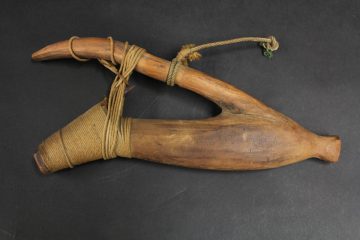 The Sheldon Jackson Museum’s July Artifact of the Month is a halibut hook (SJ.I.A.645). Despite serving the same purpose and having the same basic principal design as the other halibut hooks in the museum’s collection, the Artifact of the Month is very different from the other hooks in its construction and simplicity. All coastal tribes have historically caught halibut, though the Makah on the Olympic Peninsula in Washington and the Tlingit and Haida were the most extensive harvesters of the fish. The species is most abundant in the spring before the arrival of salmon, but can be caught year round, an excellent source of food, fresh or cured. The featured halibut hook is made from the natural crotch of a tree. The large heavier arm has an iron barb bound into place in a vertical groove with two-ply commercial cord. Read the rest here 09:09
The Sheldon Jackson Museum’s July Artifact of the Month is a halibut hook (SJ.I.A.645). Despite serving the same purpose and having the same basic principal design as the other halibut hooks in the museum’s collection, the Artifact of the Month is very different from the other hooks in its construction and simplicity. All coastal tribes have historically caught halibut, though the Makah on the Olympic Peninsula in Washington and the Tlingit and Haida were the most extensive harvesters of the fish. The species is most abundant in the spring before the arrival of salmon, but can be caught year round, an excellent source of food, fresh or cured. The featured halibut hook is made from the natural crotch of a tree. The large heavier arm has an iron barb bound into place in a vertical groove with two-ply commercial cord. Read the rest here 09:09


































